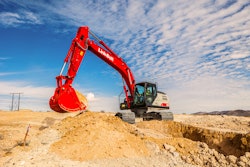
Applicants for construction jobs have decreased sharply in recent years, and the industry continues to face a significant labor shortage. To meet the demand for workers, more than a half-million would need to be hired in 2023.
There are numerous reasons for this immense gap – chief among them are the effects of the COVID-19 pandemic and a lack of training.
Like other industries during the pandemic, supply chain issues, shutdowns, and early retirement were factors behind the decrease in skilled labor in construction, and the industry has not recovered like other industries have since society returned to a state of normalcy.
One of the biggest challenges is that to get more skilled workers, we need more people to train them. That’s difficult because the U.S. is also facing a teacher shortage. Finding enough qualified instructors – those with on-site construction experience – isn’t easy because it’s hard to convince laborers to leave their jobs for the lower pay of instructing.>
Investing in Your People
But it’s not all about numbers. Finding solutions to the labor shortage comes down mainly to mindset – construction companies resolving to improve their hiring and training processes and maximizing the capabilities and growth of the people currently working for them.
Finding enough workers will be a greater challenge for the industry in the near future as older workers retire faster than younger workers can take their place. And although solving the teacher shortage is a big issue that companies can’t fix alone, one way to help recruit and retain young workers is for companies to invest more in their own education and training programs. The biggest thing companies misunderstand about training is that real training is investing in your people.
Don’t hire people; invest in them, and expect employees to invest in you. If you’re not investing in your people, you’re not doing it right. This is where culture training starts.
Predictive Interviewing
Training starts from the interview; from the first time you meet a candidate. Predictive interviewing allows companies to accurately predict how successful someone will be in the job you’re hiring for. This is a dynamic process. It’s a mix of experience-based and personality-based questions. There are three basic steps:
● Find and/or create your ideal employee. Look at your most successful employees in a position. Then find your absolute best employee. This is your standard-bearer. If you don’t have an employee in this position yet, create an imaginary list of what you think would make for the perfect person. What makes them so successful? What experience do they have? That kind of objective information is important and will affect how much training is needed.
● Understand the skill level required. You need to understand if the position you’re hiring for is a highly skilled position or an entry-level employee who might be brand new to the workforce. The training requirements for those jobs will be different. What are the needs of your business? In my businesses we use a level system to evaluate employees from 1 to 10. Throughout the interview, I ask questions that align with each of these levels and use that to decide how much training they’ll need.
Levels 1 and 2 are pretty basic questions. For example, Can you use a nail gun? Do you know how to mix concrete? Levels 3 and 4 get more in depth: Can you build a set of stairs or read a blueprint? If a potential hire starts to stumble around the level 3 questions, I know they’ll likely come in as a level 2 employee. Try not to hire from a place of desperation but from wisdom, especially if you need to hire some of those more skilled workers. So many business owners realize they are drowning and need help right now. They accept anybody with a pulse. That’s not a good decision and almost always leads to hiring the wrong person. Hire from a place of maturity and preparation.
● Investigate the subjective side. The subjective part of the interview is critically important. You may have to train someone to learn skills, but training mindset and personality is much harder. Ask yourself, Does this person have the kind of personality that helps create the culture I’m looking for in my company? To see how self-aware they are, I like to ask questions about times when they were criticized by a manager in the past and the ways they need to improve. If they answer, “I’ve never been criticized,” then I know they are likely deluded and won’t take feedback well. If the employee is mostly going to be working by themselves, personality might not matter as much, but they need to be diligent and efficient.
Where Training Often Falls Short
Here’s where most businesses stumble: They train their employees and release them into the business. They’re all trained now, right? They should be able to do this perfectly. That may be true. Maybe you hire a bricklayer or drywall installer and they can do that one job well, but what are you doing to invest in them? Remember, we’re all about investing in people, not just hiring. Most of the time, if you ask someone who’s been at a job for four or five years, “Tell me about your ongoing training process,” they won’t understand what you mean. “I was trained at the beginning,” they’ll say. That means there’s no focus on upward mobility, and that’s a huge problem.
If an employee stops learning, how can we expect excellence? Growth is essential. It should start on the first day and never stop. As a manager, are you creating those growth opportunities in your business for your people? Showing people how to grow is the path to greatness for your brand. You need people on your team who want to scale with you, and that means constantly training excellence.
Think also about training geared to situational management – those many scenarios that come up in the course of a long career with a construction company, or any firm for that matter. When I’m building manuals and training systems, I go right to my most experienced employees and begin writing down all of the friction points they’ve experienced in their career. Calculate every mistake, because every problem is an opportunity. Ask your experienced and successful employees to tell you about the friction points they encounter and then train around those and turn problems into opportunities.
Cross-train
If a specialist leaves your company or is out for a while, do you have a person to seamlessly take their place? One way to mitigate the construction labor problem is to make better use of your current workers by cross-training them. Don’t wait for a top employee to leave in order to be prepared; when you’re at or near peak staffing you should take a complete look at your operations, identify potential staffing shortages or skills vulnerabilities, and develop a cross-training initiative to help close the gaps.
It’s important, whenever possible, to broaden your employees’ job responsibilities to create overlap and depth. Cross-train them and give them a chance to practice the new role they’re learning; otherwise, what you teach them will soon be forgotten. The more critical the skill, the better off your company will be if more than one person understands it. Besides ensuring a smooth workflow, another benefit of cross-training is that more workers will be knowledgeable about certain roles and, with those extra eyes, will bring more scrutiny to the task and improve efficiency. The result is a more flexible and productive workforce.
Evaluate Your Training System
How do you know if your training program is working? You may think everybody should be able to produce 50 widgets an hour, but maybe they’re only producing 30. As an owner, you can do 50 all day long, but that doesn’t matter if no one else in your company can.
Don’t criticize people when they’re not living up to what you think they should be able to do. Examine your training. Improving the efficiency of a company is how you unlock its true potential, and improving your training is a big key to that. You know your training program is working when people perform their jobs consistently well, see a clear path to growth, love coming to work every day, and are able to create the result you’re looking for.



















